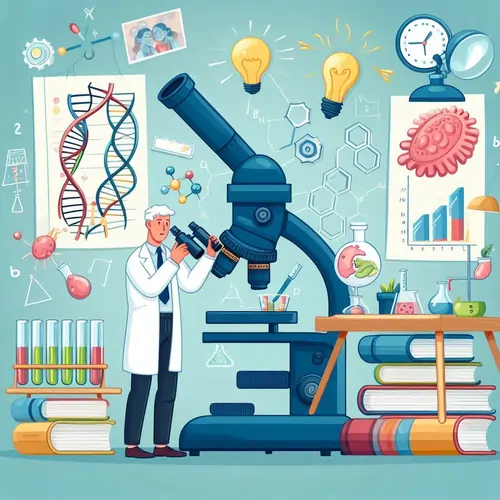Understanding Cell-Surface Receptors, Endocrine Signaling, and Intracellular Communication

Cell signaling is a fundamental aspect of biology, playing a critical role in processes ranging from cellular communication to maintaining homeostasis. University students often encounter complex questions and assignments related to cell signaling. This guide aims to elucidate these concepts, offering insights to help you understand and solve your cell assignment effectively.
Understanding Cell-Surface Receptor Ligands
One key property that prevents ligands of cell-surface receptors from entering the cell is their hydrophilic nature. These molecules cannot penetrate the hydrophobic interior of the plasma membrane. Instead, they bind to receptors on the cell surface, initiating a signaling cascade without entering the cell. This mechanism is crucial for the transmission of signals across the cell membrane, allowing cells to respond to external stimuli while maintaining the integrity of their internal environment.
Endocrine Signaling and Hormone Secretion

The secretion of hormones by the pituitary gland exemplifies endocrine signaling, where hormones are released into the bloodstream to travel to distant target cells. This is distinct from autocrine (self-signaling), paracrine (local signaling), and direct signaling across gap junctions. Endocrine signaling involves the release of hormones into the bloodstream, allowing them to reach target cells that are located far from the site of hormone release. This mechanism ensures that hormonal signals can regulate processes throughout the body, such as growth, metabolism, and homeostasis.
The Necessity of Ion Channels
Ion channels are indispensable for transporting ions into or out of a cell because ions are charged particles and cannot diffuse through the hydrophobic interior of the membrane. These channels provide a pathway for ions to cross the lipid bilayer, facilitating processes such as nerve impulse transmission and muscle contraction. Without ion channels, cells would be unable to maintain proper ionic balance, which is essential for their function and survival.
Comparing Signal Transmission Speeds
Endocrine signals are transmitted more slowly than paracrine signals because the ligands are transported through the bloodstream and travel greater distances. Paracrine signaling, on the other hand, involves local communication between neighboring cells, allowing for faster signal transmission. This difference in speed is a result of the distance the signaling molecules must travel and the mechanisms involved in their transport.
Origins of DAG and IP3
DAG (diacylglycerol) and IP3 (inositol trisphosphate) are cleavage products of the inositol phospholipid, PIP2 (phosphatidylinositol 4,5-bisphosphate). They play a pivotal role in intracellular signaling pathways by acting as secondary messengers. These molecules are produced by the enzyme phospholipase C, which cleaves PIP2 in response to the activation of certain cell-surface receptors.
Phosphorylation of Amino Acids
The ability of the amino acids serine, threonine, and tyrosine to be phosphorylated is due to the presence of a hydroxyl group in their side chains. This hydroxyl group is the site where kinases add phosphate groups, a modification that is crucial for regulating protein activity and signaling pathways. Phosphorylation of these residues can alter the function, localization, and interactions of proteins, making it a key regulatory mechanism in cells.
Role of Phosphatases
Phosphatases are enzymes that remove phosphate groups from phosphorylated amino acid residues in proteins. This dephosphorylation process is essential for turning off signaling pathways and resetting cellular processes. By removing phosphate groups, phosphatases counteract the actions of kinases, thereby ensuring that cellular signals are properly regulated.
Mechanism of NF-κB Activation
NF-κB is a transcription factor that induces gene expression by entering the nucleus and stimulating transcription. Its activation involves the phosphorylation of the inhibitor Iκ-B, which dissociates from NF-κB, allowing it to translocate to the nucleus. Once in the nucleus, NF-κB binds to specific DNA sequences and activates the transcription of genes involved in immune and inflammatory responses.
Triggers of Apoptosis
Apoptosis, or programmed cell death, can occur when a cell is damaged, no longer needed, or infected by a virus. This process is crucial for maintaining tissue homeostasis and preventing the proliferation of damaged or infected cells. Apoptosis is tightly regulated and involves a cascade of signaling events that lead to the orderly dismantling and removal of the affected cell.
Enzyme Inhibition
When an inhibitor binds to an enzyme, the enzyme is inactivated. This binding can be either competitive or non-competitive, depending on whether the inhibitor competes with the substrate for the active site or binds to a different site on the enzyme. Inhibition of enzymes is a key regulatory mechanism in many biological processes, ensuring that metabolic pathways are properly controlled.
Signaling in Yeasts
In yeasts, mating factors act as signaling molecules that facilitate communication between cells, enabling them to locate and mate with each other. These factors are crucial for the sexual reproduction of yeasts, allowing them to exchange genetic material and produce offspring with new genetic combinations.
Quorum Sensing in Bacteria
Quorum sensing is a mechanism by which bacteria assess their population density through the release and detection of signaling molecules. This process is triggered when a sufficient number of bacteria are present, leading to coordinated behaviors such as biofilm formation, virulence, and antibiotic resistance. Quorum sensing enables bacteria to act as a collective, enhancing their survival and adaptability.
Intracellular vs. Intercellular Signaling
Intracellular signaling involves the transmission of signals within a cell, while intercellular signaling refers to the communication between different cells through signaling molecules. These processes are fundamental for coordinating cellular activities and responses to environmental changes.
Limitation of Paracrine Signaling Effects
The effects of paracrine signaling are limited to an area near the signaling cells because the signaling molecules act locally and are rapidly degraded or taken up by neighboring cells. This ensures that the signal does not spread far from its source, allowing for precise regulation of cellular responses.
Internal vs. Cell-Surface Receptors
Internal receptors are located within the cell and typically bind to hydrophobic ligands that diffuse through the plasma membrane. In contrast, cell-surface receptors are located on the cell membrane and bind to hydrophilic ligands that cannot cross the membrane. These differences determine how signals are transmitted and processed within the cell.
Receptor and Dye Experiment
In an experiment where cells mixed with a dye molecule that cannot pass through the plasma membrane show dye entry upon ligand addition, the receptor likely involved is an ion channel receptor. This suggests that the ligand binding to the receptor opens an ion channel, allowing the dye to pass through.
Cell-Specific Responses to Second Messengers
The same second messengers are used in many different cells, but the response to these messengers varies due to the distinct set of proteins and signaling pathways in each cell type. This diversity allows cells to tailor their responses to specific signals, enabling complex regulation of cellular functions.
Domain Switching in Cell-Surface Receptors
Switching the intracellular domain of a cell-surface receptor with that from another receptor would likely alter its signaling pathways and cellular responses. This change could disrupt normal cellular signaling and function, highlighting the specificity of receptor domains in signal transduction.
Mutations in Kinases
A mutation in a kinase that controls a pathway stimulating cell growth could lead to uncontrolled cell proliferation, potentially resulting in cancer. Kinases play critical roles in regulating cell division and growth, and their dysregulation can have severe consequences.
Extracellular Matrix and Cell Growth
The extracellular matrix controls cell growth by providing structural support and biochemical cues that regulate cell adhesion, migration, and proliferation. Interactions with the extracellular matrix are essential for maintaining tissue structure and function.
Yeasts as Model Organisms
Yeasts are excellent models for studying signaling in humans because they share many conserved signaling pathways, are easy to manipulate genetically, and have similar molecular components involved in signaling. This makes them valuable for understanding fundamental aspects of cellular communication.
Complexity of Multicellular Signaling
Signaling in multicellular organisms is more complicated than in single-celled organisms due to the diverse cell types and the need to coordinate complex functions across tissues and organs. This complexity ensures that multicellular organisms can maintain homeostasis and respond to a wide range of environmental stimuli.
Conclusion
Understanding cell signaling is crucial for mastering biological processes and solving related biology assignment. By breaking down these concepts and exploring their explanations, you’ll enhance your comprehension and problem-solving skills. Keep revisiting these concepts, and don’t hesitate to delve deeper into each topic for a thorough understanding. Happy studying!